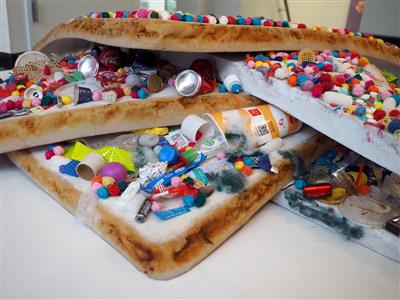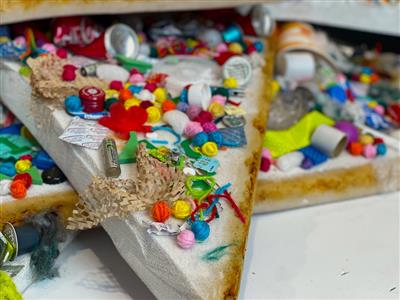18 Oct 2022

In VCE Unit 2 Art, students are given the opportunity to explore an aspect of the cultural and contemporary framework and identify a current issue that is important to them. Their creative responses are guided through an art process as they experiment with both two-dimensional and three-dimensional art forms with the aim of discovering materials and techniques that allow them to express their intended message to an audience.
“The meek shall inherit the earth” is Katherine’s final resolved work, a highly imaginative response that uses found and recycled materials to express her ideas on climate change.
Our Environment Councillors, Elaine and Clare, recently sat down with Katherine to learn more about her work.
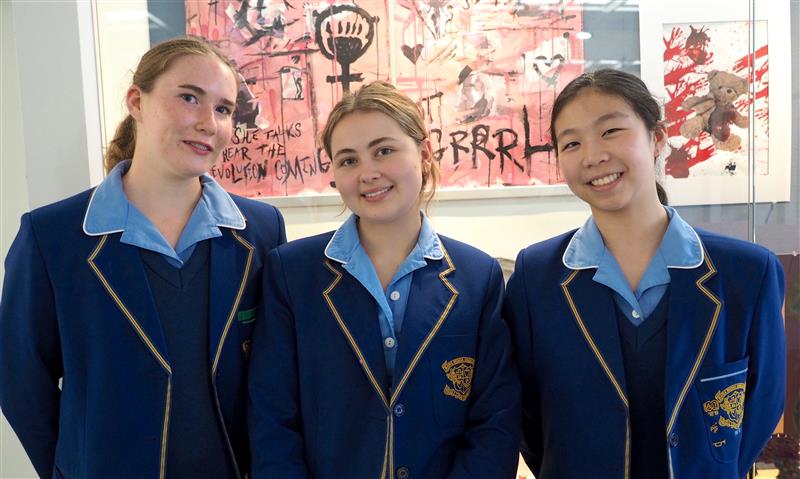
L-R: Clare (Environment Councillor), Katherine, Elaine (Environment Councillor)
What inspired you to come up with this idea?
As part of VCE Unit 2 Art, we selected an issue to focus our artwork on, and I chose the issue of “waste.” I wanted to work with found objects. The idea of fairy bread came up in a discussion I had. Fairy bread is associated with children; going to birthday parties as a kid, there’s always fairy bread there. This is then tied to the issue of pollution, and the waste that we leave behind for generations to come.
How and where did you source the materials?
A lot of the rubbish on the fairy bead is litter found on the ground. The found objects were from not-for-profit organisation called Reverse Art Truck, which provides recycled art and craft materials. The foam to make the bread were off-cuts from a mattress factory. The wood to make the plate was from a wooden crate that was initially used to store an artwork. Remaining materials were from op-shops.
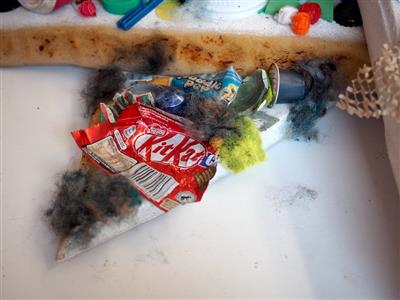 .
.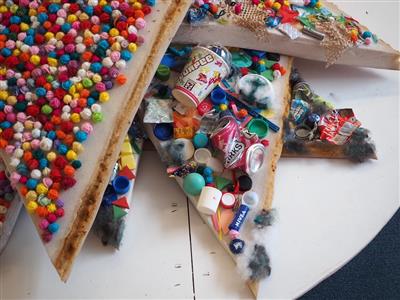
Was there a specific reason you decided to use rubbish to create the fairy bread?
I could have just used the little wool balls on every layer, however I felt that it would have more impact when using actual rubbish and make it look gross. The little fluffy parts at the bottom layer shows mould and symbolises decay. The issue of waste is not pretty or perfect, and so it was important that the artwork itself wasn’t pretty or perfect, so that it conveys how the issue is and feels.
What could be the greater impact if more sustainable projects were adopted?
It would make viewers think more about sustainability, especially if such artworks were placed in public spaces. This would make them think about waste as a real, serious issue. If people use recycled materials to create artwork, it would benefit the actual issue as less people will be sourcing materials that are not sustainably made. It would help to reduce waste overall.
What did you learn about sustainability through creating this artwork?
It was a lot easier to source sustainable materials than I thought it would be. Many people assume that it would be harder to find materials. The mattress factory was more than happy to give free off-cuts of foam that they couldn’t use.
What other sustainable projects do you think we should promote in schools, especially in the Art curriculum? Do you think it could be realistic for schools to get their art equipment from sustainable sources?
For sure! It would be great to see schools sourcing more art materials in a sustainable manner. Using these materials in art projects would teach students more about sustainability. Having the schools source art materials more sustainably would simplify the issue by opening up a creative avenue to find solutions to waste and sustainability.
